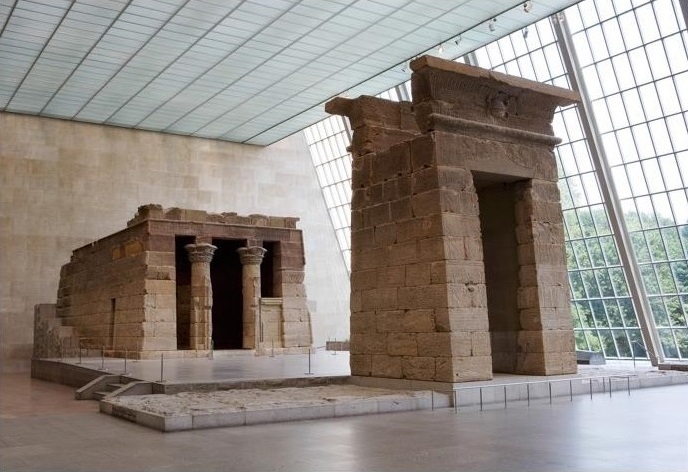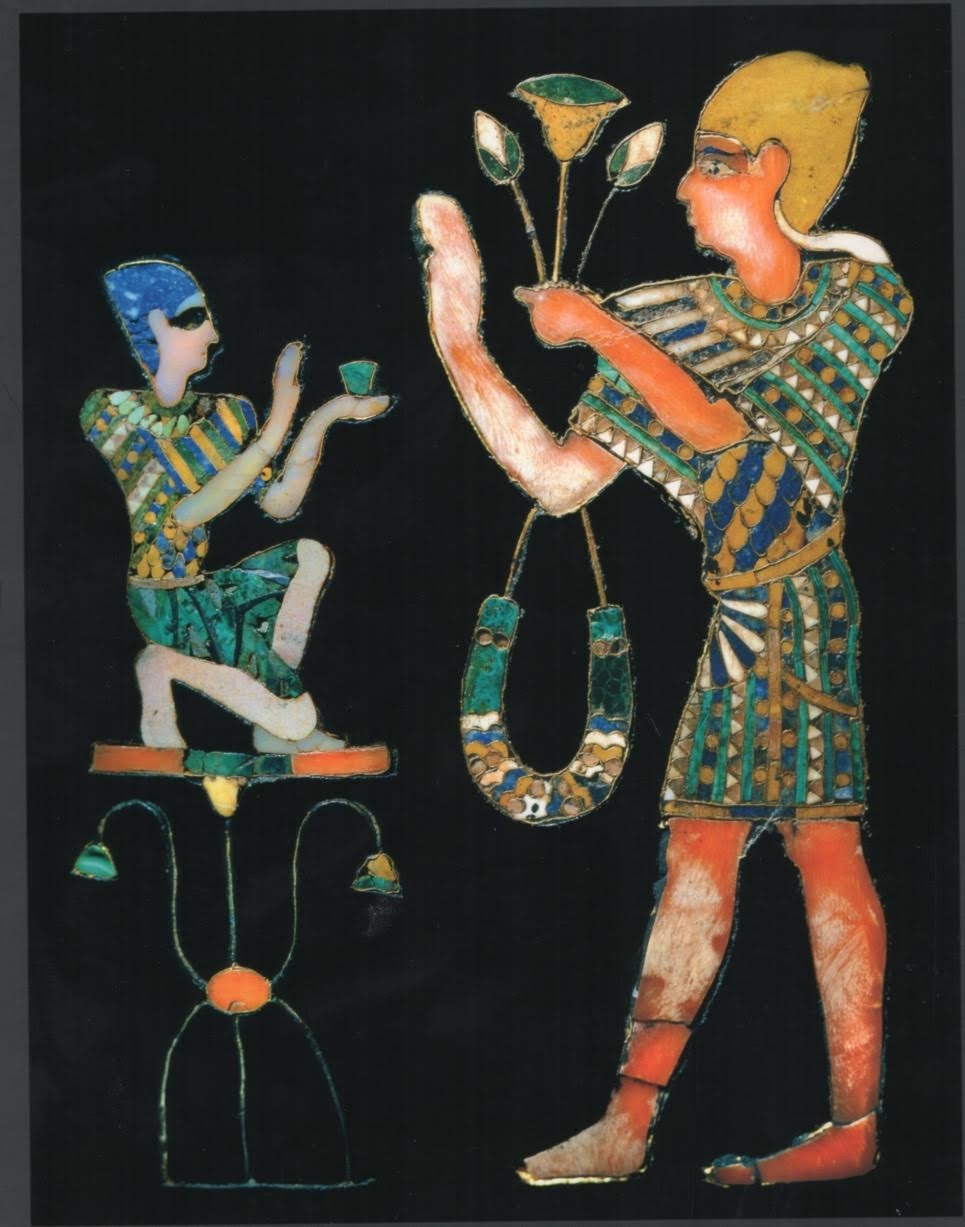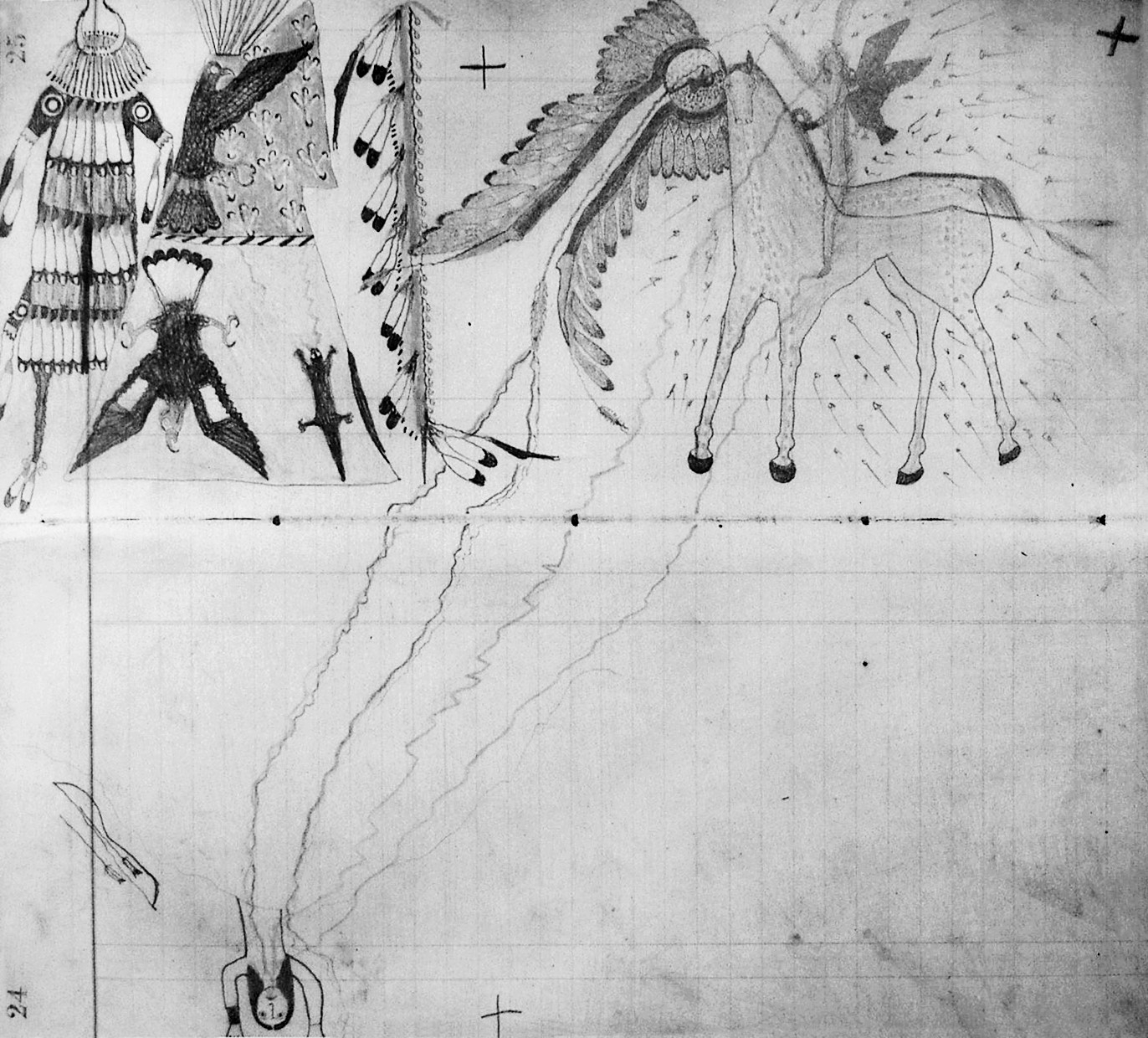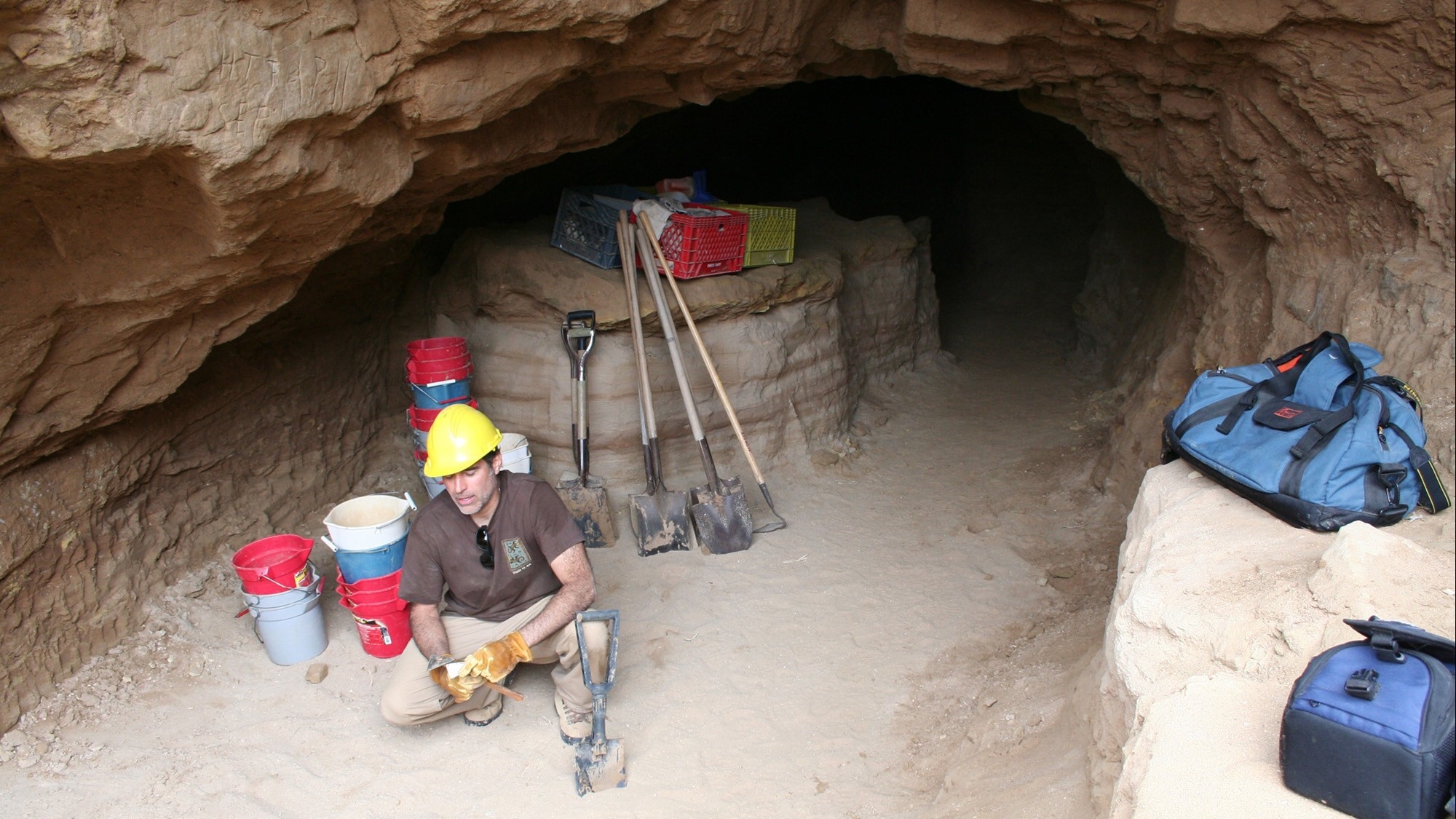Past Events
Interested in Cotsen events? Sign up for our mailing list.Speakers: Noemi Mafrici and Michela Mezzano, Ph.D. Candidates, Architecture and Landscape Heritage, Politecnico di Torino
This talk will present the first outcomes of the ongoing joint research project between POLITO and UCLA. The project "Cultural Heritage in context: digital technologies for the humanities" concerns the UNESCO campaign of the 1960s for the rescue of the Nubian temples that risked being flooded .The aim of the project is to reconstruct the lost context of the Nubia heritage and to visualize the relocation of the temples involved in the salvage campaign .The case of the temple of Dendur will be presented through its three contexts: the lost original Nubian landscape, the relocated space at the Metropolitan Museum of Art, and the Virtual Reality reconstruction context.

Contact Matthew Swanson
Email mswanson@ioa.ucla.edu
Phone
Speakers: Dr. Marilyn Kelly-Buccellati, Visiting Professor, Cotsen Institute of Archaeology; Giorgio Buccellati, Professor Emeritus, Near Eastern Languages and Cultures, UCLA
"These forty years now I've been speaking in prose without knowing it!" Unlike Moliere 's Monsieur Jourdain, we knew we were "speaking prose" ... Our "prose" was community archaeology, which we undertook to implement since the beginning of our excavation projects in Syria. Having embarked on an effort that relied on a common sense type of approach, very much down to earth as it befits an archaeological endeavor, we have come to reflect more and more on its theoretical implications. And the current war in Syria has put to a severe test our presuppositions . We will first review the main aspects of our specific case of "community archaeology" at Tell Mozan, ancient Urkesh, and we will then share our reflections on its theoretical import. This is particularly meaningful now, at a moment when the concept is beginning to gain traction on the one hand, while on the other we find ourselves physically separated from our "community."
Contact Matthew Swanson
Email mswanson@ioa.ucla.edu
Phone
Speaker: Dr. Annelou van Gijn, Professor of Archaeological Material Culture and Artefact Studies, Faculty of Archaeology, Leiden University
Contact Matthew Swanson
Email mswanson@ioa.ucla.edu
Phone
Speaker: Dr. Meredith Cohen, UCLA Art History
Contact Matthew Swanson
Email mswanson@ioa.ucla.edu
Phone
Speaker: Dr. Stephanie Pearson, Institut für Archäologie at Humboldt-Universität zu Berlin, Germany
In the later first century BC, Egyptian material sweeps into Roman houses on an unprecedented scale. Its connection to Octavian’s conquest of Egypt has been taken for granted; but what are the actual mechanisms by which a political event could affect material culture? Archaeological and textual evidence in fact sheds light on this process, in part by allowing us to identify precise categories of Egyptian objects that Romans acquired. It also reveals the importance of considering context and artistic adaptations in understanding the variety of meanings for Egyptian material in Roman houses.

Contact Matthew Swanson
Email mswanson@ioa.ucla.edu
Phone
Speaker: Dr. Carlo Severi, Laboratoire d'anthropologie sociale, EHESS, Paris
For linguists, anthropologists and archaeologists, the emblematic image always and everywhere preceded the appearance of the sign. This myth of a figurative language composed by icons, that form the opposite figure of writing, has deeply influenced Western tradition. In my talk, I show that the logic of Native American Indian mnemonics (pictographs, khipus) cannot be understood from the ethnocentric question of the comparison with writing, but requires a truly comparative anthropology. Rather than trying to know if Native American techniques of memory are true scripts or mere mnemonics, we can explore the formal aspect both have in common, compare the mental processes they call for. We can ask if both systems belong to the same conceptual universe, to a mental language, to use Giambattista Vico’s définition, that would characterize the Native American arts of memory. In this perspective, techniques of memory stop being hybrids or imprecise, and we will better understand their nature and functions as mental artifacts.

Contact Matthew Swanson
Email mswanson@ioa.ucla.edu
Phone
Speaker: Dr. Fumie Iizuka, University of Arizona
Monagrillo (ca. 4500-3200 14C BP) is the earliest ceramic of Central America. It is found in Central Panama in shell-bearing middens of the Pacific coast, rockshelters of the Pacific plains, foothills, and the cordilleras, and the Caribbean slopes. People had been farming for thousands of years when they adopted pottery. Population was significantly increasing. However, it had not been clear whether 1) they farmed in the inland during wet seasons and engaged in coastal subsistence activities during dry seasons or 2) they were sedentary by the time pottery emerged, engaging in exchange of local resources.
Typological studies of this pottery had been conducted in the past; however, understanding of its production zones, circulation patterns, and possible use had been limited. In my research, I examined this pottery from different environmental zones, adopting visual, petrographic, geochemical, and microstructural analytical methods. I sourced and inferred production and circulation patterns, and assessed manufacturing techniques and firing temperatures. I inferred from the results that sedentary inhabitants of the Pacific foothills and the coast of central Panama produced pottery during the dry season and it circulated to the Pacific plains, the intermediate area, where people engaged in reciprocal social exchange. Pacific foothills vessels, but not coastal wares, were weathering and impact resistant, which suggested intended use in the rugged terrain and for transportation to the perennially wet Caribbean slopes. Pottery was generally made to be suitable for cooking; population pressure may have affected producers and consumers to adopt new cooking techniques.
Contact Matthew Swanson
Email mswanson@ioa.ucla.edu
Phone
Speaker: Dr. René Vellanoweth, Professor and Chair, Department of Anthropology, California State University, Los Angeles
In 1835, as part of broader efforts to missionize California Indians, the native people of San Nicolas Island were removed and sent to live on the mainland. This essentially marked the end of a 10,000-year history of native occupation and sealed the fate of all Nicoleño on the island except for one person who lived alone for 18 years. Known as the Lone Woman of San Nicolas Island, baptized and named Juana Maria upon her death, and made famous as the young heroine, Karana, in Scott O’Dell’s (1960) classic children’s novel, “Island of the Blue Dolphins,” her story has captured the imaginations of people the world over. But who was Juana Maria? What happen to her family members on the fateful day in 1835? What did she do for 18 years alone on the island? How did she survive physically as well as psychologically? In this presentation I will attempt to answer some of these questions by placing the Lone Woman’s story within its archaeological and historical contexts.

Contact Matthew Swanson
Email mswanson@ioa.ucla.edu
Phone
Speaker: Dr. Anneke Janzen, Postdoctoral Scholar, Cotsen Institute of Archaeology
Specialized pastoralism emerged in Kenya around 3000 years ago and has adapted with changes in the social and ecological landscape to this day. My dissertation work used stable isotope analysis to explore the mobility and herd management strategies of early pastoralists in south-central Kenya 3000 to 1200 years ago, before the appearance of agriculture in the region.
Another facet of my work on early herding involves examining the anthropogenic effects on wildlife populations. The emergence and spread of pastoralism in East Africa undoubtedly impacted indigenous species, particularly wildebeest, which are found in archaeological sites far outside their current range today. Pastoral extirpation of wildebeest populations from prime grazing areas is one likely cause of their shifting biogeography over time. Through stable isotope analysis of wildebeest teeth from archaeological sites, a history of their annual migration cycle are elucidated, illuminating patterns of local extinction in the context of pastoral expansion in Kenya.

Contact Matthew Swanson
Email mswanson@ioa.ucla.edu
Phone
Speaker: Dr. Alan Farahani, Postdoctoral Scholar, Cotsen Institute of Archaeology
This talk is a summary of the research conducted by Postdoctoral Scholar Alan Farahani at the UCLA Cotsen Institute of Archaeology over the past two years. His research has been focused on the long-term social and environmental consequences of agricultural production throughout the world using the method of paleoethnobotany, which is the study of archaeological plant remains to understand past human cultures. The talk highlights recent fieldwork and preliminary results from Dhiban, Jordan, from Ifugao, the Philippines, and Iraqi Kurdistan, the combination of all of these projects investigating the effects of empire, colonialism, and urbanization on agriculture spanning over six millennia of agricultural practice.

Contact Matthew Swanson
Email mswanson@ioa.ucla.edu
Phone
- ‹ previous
- 17 of 21
- next ›


